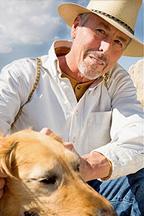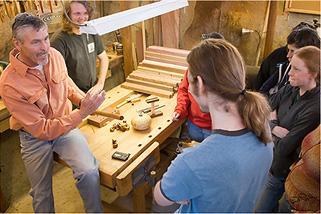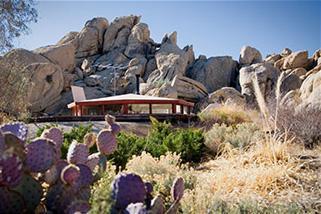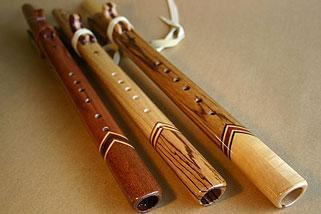About John Stillwell
I have always had a special affinity for wood.
 Starting as a small boy, I was carving and making things out of wood. I grew up under the trees of the mixed deciduous forest of the Eastern Seaboard. White oak trees 100 feet tall. Their roots growing deep down into the earth. Some of these trees had been alive since before the time of the white mans arrival on these shores. Maple, birch, hickory, elm, chestnut, beech, pine, cedar, fir, poplar, cherry, walnut, hemlock. All around and overhead, trees. As a boy I climbed and played in the trees. I grew up among men who knew the uses of each different species of tree and how to use different parts of the tree for different purposes . For these people wood was an integral part of their lives. They respected and loved trees. As if by osmosis, these individuals imparted this love to me. I learned to appreciate wood as a living thing, a sacred thing, something that was part of a man, a part of his life.
Starting as a small boy, I was carving and making things out of wood. I grew up under the trees of the mixed deciduous forest of the Eastern Seaboard. White oak trees 100 feet tall. Their roots growing deep down into the earth. Some of these trees had been alive since before the time of the white mans arrival on these shores. Maple, birch, hickory, elm, chestnut, beech, pine, cedar, fir, poplar, cherry, walnut, hemlock. All around and overhead, trees. As a boy I climbed and played in the trees. I grew up among men who knew the uses of each different species of tree and how to use different parts of the tree for different purposes . For these people wood was an integral part of their lives. They respected and loved trees. As if by osmosis, these individuals imparted this love to me. I learned to appreciate wood as a living thing, a sacred thing, something that was part of a man, a part of his life.
The first time that I got serious about working with wood was at a boatyard on Terminal Island in California. I was living on an old wooden schooner that had been built back in the 1930s. It had a mahogany hull 2 inches thick, steam bent white oak ribs, a teak deck and fir masts. The boatyard did repairs on wooden fishing boats which were still common at that time. Because my schooner was moored next to the yard I got to know the night watchman. When everything closed down and the workers went home, he let me go into the big shop and work on repairs for my own boat. During the day I hung around and watched, listened and learned from the old European craftsman who had spent their entire lives working in wood.
I've been making my living working with wood pretty much ever since.
 I ended up with a shop that made custom furniture for interior designers. It was fancy, high end stuff without much soul.
I ended up with a shop that made custom furniture for interior designers. It was fancy, high end stuff without much soul.
At its peak, there were 18 people working under one roof, churning out entertainment systems and what not. And, instead of being out on the floor working with wood I was in an office working with a telephone. I didn't like it, so I finally got out.
Now I'm back to a small shop with a few finely tuned tools. Again I'm doing what I love to do best, making beautiful things out of wood.
I first picked up a Native American style flute over 25 years ago.
It was a simple bamboo affair. This Love flute didn't sound very good. But, I didn't know any better so it sounded fine to me. Music started coming out of that flute. Very simple at first, but they were lovely sounds that stirred my heart. My fingers began to enjoy dancing on the holes and I got better. Soon I was looking for a better Native American style flute, and then another flute after that. I was on a quest for that really sweet sound. Finally, Spirit led me to Clint Carlyle, the man who would become my teacher. Clint had been making flutes for a long time. He and his wife were deeply connected to Native American culture and the Sundance festival. He would make dozens of flutes, take to the Sundance and gift them to the People. His Native American style flutes and his teaching inspired me to begin making flutes of my own.
My first few Love flutes were tentative affairs made with rather primitive tools.
Then I got some good tools. With each succeeding Native American style flute my understanding of flute dynamics improved. The sound became true and clear. The shape of the flutes became more refined and pleasing to the eye. Along the way I got help and encouragement from other flute makers. Generous people, who gave freely of their knowledge to help an aspiring flute maker on his way. I know that I'm not at the end of this flute making road and probably never will be. I'm glad of that, because part of my joy comes from listening for the lessons that each flute has to teach.
Ancient Territories Native American style flutes are made entirely by me.
 Each Love flute is shaped by hand not on a lath. Each individual flute is a unique expression of my hands and eyes working together in the act of creation. No two Native American style flutes made in my shop are exactly alike. The combination of woods are different, the shapes are subtly different and, amazingly enough, the voice of each flute, even those in the same key and made from the same wood is different. I try to put all the dedication and love that I can into each flute. I know that I fall short of the goal but, it's a work in progress.
Each Love flute is shaped by hand not on a lath. Each individual flute is a unique expression of my hands and eyes working together in the act of creation. No two Native American style flutes made in my shop are exactly alike. The combination of woods are different, the shapes are subtly different and, amazingly enough, the voice of each flute, even those in the same key and made from the same wood is different. I try to put all the dedication and love that I can into each flute. I know that I fall short of the goal but, it's a work in progress.
I am not of Native American blood.
 But, I have been an admirer of Native American culture since my earliest years playing with spears and bows and arrows in the woods. I feel that the Old Ones are a part of my spirit. I did bead work and made a war bonnet before I was 11 years old. In the 60s I lived in New Mexico. I wore moccasins and went to the Pueblo and Hopi Indian dances and studied their culture. However I don't look back to the past with nostalgia. I live and work in the present and look forward to a future when all the races, and all the voices, and all the sounds will come together as One. I see it happening Now, with each new person who picks up a Love flute, or a drum, or a rattle and joins the Circle.
But, I have been an admirer of Native American culture since my earliest years playing with spears and bows and arrows in the woods. I feel that the Old Ones are a part of my spirit. I did bead work and made a war bonnet before I was 11 years old. In the 60s I lived in New Mexico. I wore moccasins and went to the Pueblo and Hopi Indian dances and studied their culture. However I don't look back to the past with nostalgia. I live and work in the present and look forward to a future when all the races, and all the voices, and all the sounds will come together as One. I see it happening Now, with each new person who picks up a Love flute, or a drum, or a rattle and joins the Circle.
My back yard shop.
 This is the place where spirit takes form.
This is the place where spirit takes form.
I designed and built the shop myself.
It is mostly below ground level with roof and windows above the ground. It is cut out and dug into the granite rocks. This is good for climate control in the arid desert environment. My shop is quite small but it is all that I need to make a quality, hand made Native American style flute for you.
 I don't chop a Native American style flute out of a tree branch with a hatchet. I use a full complement of modern wood working tools. You can watch a viedo showing the tools I use here: the tools
I don't chop a Native American style flute out of a tree branch with a hatchet. I use a full complement of modern wood working tools. You can watch a viedo showing the tools I use here: the tools
 Here's a picture of the drill press I use to drill the tone holes.
Here's a picture of the drill press I use to drill the tone holes.
It has a laser guide and adjustable vise to accurately position the holes.
To the right you can see some wood waiting to be transformed into flutes.
 Here's a picture of my back yard in the Mojave desert.
Here's a picture of my back yard in the Mojave desert.
I go walking in these hills several times a week with my Springer Spaniel, Merlin.
 A little friend I met along the way.
A little friend I met along the way.
I don't chop a flute out of a tree branch with a hatchet. I use a full complement of modern wood working tools.


